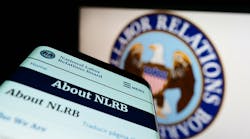Until recently logistics and freight transportation employers could safely ponder from afar developments in other industries that arose from the National Labor Relations Board (NLRB) decision allowing unions to organize "micro units" within workplaces. No longer.
In March a federal appeals court upheld two union election victories obtained by the Teamsters among separate units of city and road drivers at Federal Express terminals in North Carolina and Pennsylvania. FedEx sought to overturn the victories, arguing that the units also should have included more than 200 dockworkers at the same terminals.
The original NLRB ruling handed down in 2011 allows unions to cherry-pick which employees they can organize at an individual workplace. At the time, the board created confusion and uncertainty for employers by holding that workers in the same workplace could be divided into different groups by unions unless the employer shows that most of the workers are "readily identifiable as a group" and share "an overwhelming community of interest."
However, the NLRB failed to adequately define what it would find persuasive to grant community of interest status to a larger workforce, leaving it to be defined slowly over the years, case by case.
The first "micro unit" cases that surfaced involved employees in different parts of department stores. But unless you are acutely focused on the union status of the women who hand out perfume samples as you walk into the store (an actual case), those decisions upholding micro units attracted little attention.
But this April the NLRB upheld a United Auto Workers election by 165 maintenance workers at a Volkswagen plant in Chattanooga, Tenn. This took place at the same facility where UAW was shocked when it lost a plant-wide vote earlier, although management seemed to be supportive of the union's efforts at that time. Since then the UAW invited VW's German union to intervene, and company management is appealing the NLRB micro unit ruling in court.
Later in April another federal appeals court upheld a unit of 113 maintenance workers, while excluding 578 production workers at a Nestle Dreyer's Ice Cream plant.
The board also allowed a union to organize a unit at a commercial printer that included pre-press, digital press, offset bindery, digital bindery, and shipping and receiving employees, but excluded offset-press employees. Typically, printing projects would start in pre-press, move to offset-press, and then end up in offset bindery. Even working on the same project together failed to establish a community of interest in the eyes of the NLRB.
So what is an employer to do? As these cases show, it is not easy to prepare for a situation where the adjudicators can move the goalposts at whim—as long as the results come out in favor of the unions—but there are steps you can take.
For what it's worth, Brian Mumaugh, an attorney with the firm of Holland & Hart, suggests these steps employers can take to create the best possible argument against a micro unit:
- Consider combining departments or job classifications that share skills or tasks.
- Cross-train and cross-utilize workers across departments, classifications, or locations.
- Allow promotional and transfer opportunities across department and organizational lines.
- Revise supervisory and managerial structures so that more employees report to the same managers.
- Maintain pay and bonus structures common to all employees or for all of those in a larger unit.
"Micro units can be a game-changer when it comes to union organizing, so employers have to change their own tactics to combat such bargaining units," Mumaugh says. "Taking time now to change organizational and reporting structures can go a long way in overcoming a proposed micro unit in the future."
David Sparkman is founding editor of ACWI Advance, the newsletter of the American Chain of Warehouses Inc., as well as a member of the MH&L Editorial Advisory Board.



